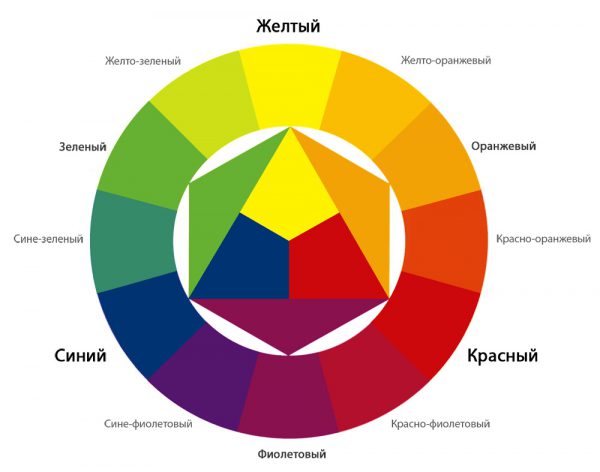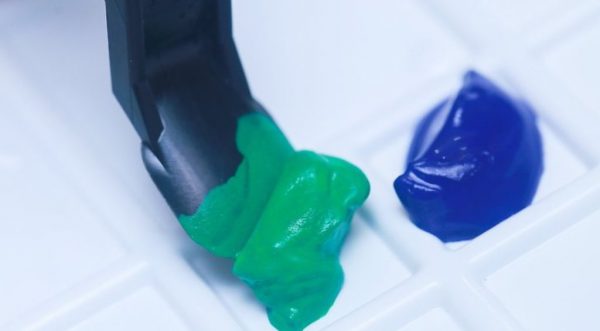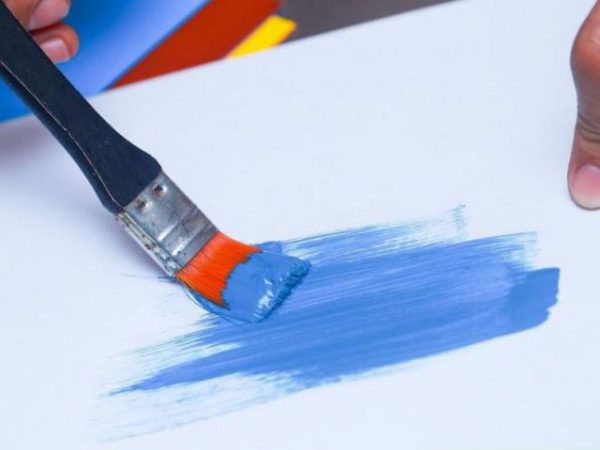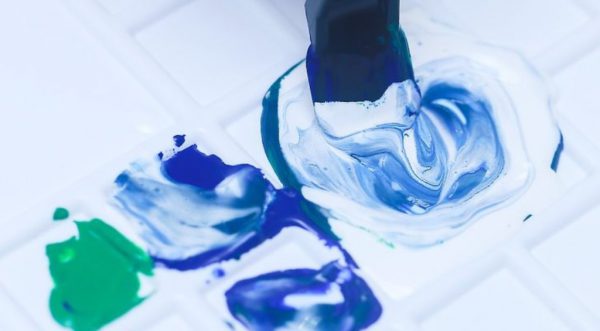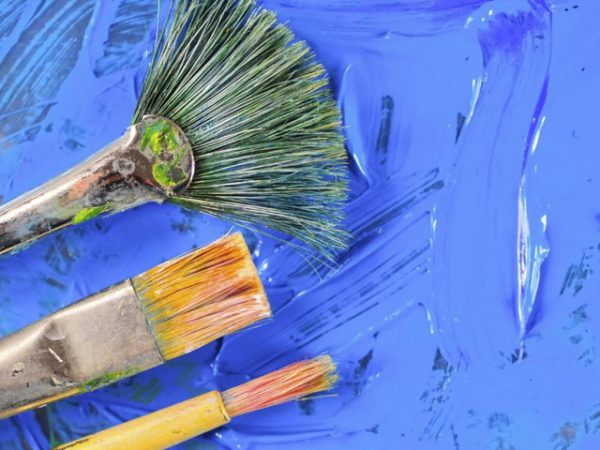Blue is one of the primary colors. Along with red and yellow, it is included in the list of tones, the development of which is impossible at home. But the artists know very well how to get the blue color in its various shades - for this you need to mix the classic color with other pigments, which gives amazing results.
- Traditional color wheel
- Classic blue and its shades
- Blue green
- Prussian blue
- Blue violet
- Royal blue
- Blue gray
- Navy blue
- Blue
- Other shades
- Blue in nature
- Color Mixing Tips

Traditional color wheel
Specialists call blue, red, and yellow the “three whales” of color and painting. It is on them that the widest palette of midtones of the second and third orders is held, they are combined among themselves, while the creation at mixing paints ruled out.
All the most important colors are included in the so-called color wheel. It is a conditional model divided into sectors. The latter are placed in an order close to the arrangement in the visible light spectrum. The nearby shades are called chromatic, they can be mixed together to produce a new chromatic (color) paint. If, when mixing paints, take opposite tones, an achromatic color (grayish) will come out. That is, the farther the colors are from each other, the more likely that their mixture will give an inexpressive, ugly tone.
to contents ↑Classic blue and its shades
It will not work to make the blue color of the house, so to create different shades of it you need to purchase ready-made gouache, watercolor, acrylic paint or some other type of dye (even plasticine). Then you can use other colors from the set, because when combined, you can get incredible tones and midtones of blue. Artists have special tables with the names of the shades and the necessary proportions for the colors, but in practice you still have to experiment.
to contents ↑In conventional gouache sets, blue is represented by a hint of ultramarine. It is very bright, moderately dark, has a little purple notes. There is an important rule that you need to remember: to brighten the tone, add white color, to darken - black, to change the reflection of paint - various colors.
Blue green
Making shades of blue with green highlights is easy. The effect of a dark green tone gives the introduction of a small amount of finished green paint into the blue. If it is not, you can do otherwise. Since the combination of blue and yellow gives a green color, you can add a little yellowness to the blue. Next, the paint is highlighted with white, as a result, a third-order shade is obtained, less saturated.
Prussian blue
Azure color also contains green shades. Artists have a recipe for its preparation - you need to combine 1 part of blue and the same amount of light green or bright green (grass) shade. If necessary, the tone is diluted with white.
to contents ↑Blue violet
This color is considered very rich, powerful in energy, it is prepared by combining blue and red paint in the same proportions. But the finished purple must be made to “turn blue”, for which a blue color is added dropwise until the desired tone is obtained. Usually the final ratio does not exceed 2: 1.
Royal blue
The color royal is a dark, cold tone, close to the classic.Traditional royal blue is part of the HTML color scheme used in computer graphics. It is also the main tone of ink, ink for cartridges. To make this color, a drop of black and even less green is introduced into the ultramarine.
Blue gray
This shade reminds of a cloudy sky, as well as the color of water on a sunny day. In the base blue you need to add a little brown, in the end you get a dark blue-gray tone. It is diluted with white to the desired degree of clarification. There is another option for creating a gray-blue hue - to combine blue with orange, as a result, you will get a grayish mass with a slightly blue glow.
to contents ↑Navy blue
Blue paint begins to darken by adding a small amount of black color. The ratio should be no more than 4: 1. The creation of such a shade is required if you need to "soothe" the color when it is initially too bright.
Blue
Blue color is easy to do. For this, any blue color is bred with whitewash of 3: 1 or more. An increase in the volume of white paint leads to even more lightening up to sky blue or pastel blue. To achieve the production of the original tone, you can make turquoise white with whites.
Other shades
A Wedgwood tone is obtained by combining a serving of blue, as well as a drop of white and black paint. For dark turquoise, a yellow-green color is added dropwise to the blue. Cornflower blue is created by mixing violet, blue, a drop of brown and the same amount of black dye.
to contents ↑Blue in nature
In the real world, blue is perceived by the eye in the range of 440-485 nm. This is the digital value of the electromagnetic wavelength, which has a blue tone in the general spectrum of light. In nature, you can see up to 180 shades of blue - its tones are visible in the colors of the seas and oceans, sky, dusk, moonlight, many plants, insects.
to contents ↑
Color Mixing Tips
To get the perfect color, you must ensure that all ingredients are similar in chemical composition. Otherwise, the mass may become stratified, and unbroken veins will remain in it. It is also important to apply high-quality paints, because others eventually begin to darken, turn gray. Oil dyes are very susceptible to changes - it is better to first try work on a small area and evaluate the effect in a couple of days. Artists note: the fewer colors were combined, the better the result will be, the less the risk of burnout and peeling of the finished decor.

